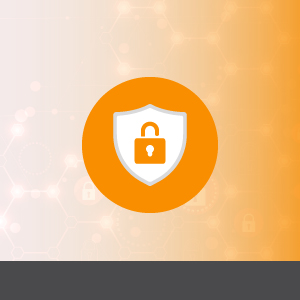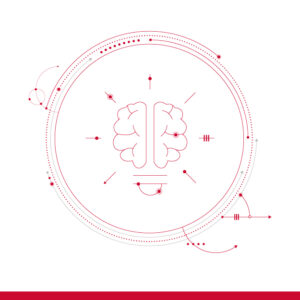The recent Executive Order-14277 promotes the inclusion of artificial intelligence (AI) in education and is a significant step toward preparing America’s youth for an AI-driven future. Signed on April 23, 2025, this directive establishes a comprehensive framework for integrating AI literacy and proficiency across the educational landscape.
As schools explore the benefits of AI, Carahsoft and our partners are here to guide and support their journey. Here are the takeaways that we found most important from the recent Executive Order.
Task Force on Artificial Intelligence Education
At the center of this Executive Order is the establishment of a White House Task Force on Artificial Intelligence Education. This cross-agency Task Force is chaired by the Director of the Office of Science and Technology Policy, and features executives from various offices and departments, such as the Director of the National Science Foundation (NSF), the Special Advisor for AI and Crypto and the Secretaries of Agriculture, Labor and Education. The Task Force will coordinate Federal efforts to promote AI in education and implement the policy initiatives outlined in the order.
These include:
- Promoting AI literacy in the workforce and education
- Training educators in AI usage
- Integrating AI into early education
- Creating an AI-ready workforce
This coordinated approach underscores the Federal Government’s commitment to ensuring students develop the skills necessary to thrive in an increasingly AI-driven economy and society.
Initiatives for Enhancing K-12 AI Education
With this Executive Order, schools are encouraged to establish partnerships with leading AI industry organizations, academic institutions and nonprofit entities to develop online resources that will teach K-12 students foundational AI literacy and critical thinking skills. Partnerships will be awarded on a rolling basis, with resources expected to be ready for classroom use within 180 days of the first announced partnerships.
Additionally, within 90 days of the new Executive Order, the Task Force will establish plans for the Presidential Artificial Intelligence Challenge. This challenge celebrates student and educator achievements in AI, fostering collaboration between Government, academia and industry organizations, such as Varsity Tutors, which empowers students through its AI-powered adaptive learning platform, as well as its ability to recommend personalized tutors.
Prioritizing Teacher Training and Professional Development
Recognizing that effective AI education depends on well-prepared educators, the Executive Order directs the Secretary of Education to prioritize AI in discretionary grant programs for teacher training, authorized by the Elementary and secondary Act of 1965. This includes professional development focused on:

- Reducing time-intensive administrative tasks
- Improving teacher training and evaluation
- Integrating AI fundamentals across all subject areas
- Providing specialized training in computer science
AI can reduce the burden on teachers by aiding with management. Platforms such as Degree Analytics and Education Analytics both utilize AI and machine learning to analyze student communications and engagement and provide reports to improve student performance and retention. Gaggle can help by alerting educators and parents of potential safety concerns with social media posts and other student communications, aiding educators in managing students.
Additionally, the NSF is directed to prioritize research on AI in education and create teacher training opportunities that help educators effectively integrate AI-based tools in classrooms. There are a wide variety of AI-based tools for educators to choose from. Nuventive, for example, offers performance improvement platforms with AI-powered analytics for strategic planning in education. YuJa integrates AI for video captioning, analytics and engagement tools, and Turnitin helps educators detect plagiarism and writing patterns. PowerNotes, Docebo and Instructure (a Canvas platform) all feature organizational and learning enhancements for students. Docebo and Instructure (a Canvas platform) all feature organizational and learning enhancements for students.
The Executive Order extends beyond K-12 education to address workforce development through AI-related Registered Apprenticeships. The Secretary of Labor is directed to increase participation in these programs by establishing specific growth goals with existing discretionary funds in order to support the creation of nationwide program standards.
Building an AI-Ready Workforce Through Apprenticeships
States and grantees are also encouraged to use Workforce Innovation and Opportunity Act (WIOA) funding to support AI-based learning opportunities. This component of the Executive Order creates significant potential for collaboration between education institutions, Government agencies and industry partners to develop comprehensive AI workforce development pathways. Some industry partners who have already begun integrating AI for workforce development initiatives are Education Technology, Services and Research (EAB), which uses AI to support student success, and YouScience, which maximizes student success by using AI to analyze a student’s interest and aptitudes and match them with academic pathways.
The Path Forward
Educational institutions and Government agencies seeking to capitalize on the opportunities laid out in Executive Order “Advancing Artificial Intelligence Education for American Youth” should begin planning now. Industry tie-ins can enhance education and learning, such as Udemy, which offers content recommendations and delivers AI course content, Invoke Learning, Inc., which leverages AI and data science to improve student outcomes and institution decision-making and Impero Software, which offers AI monitoring features for safeguarding and classroom management. Industry aid can go beyond K-12 education, too. Element451, for example, promotes student engagement and enrollment management in higher education.
Carahsoft and our ecosystem of technology partners are ready to support this national effort to prepare America’s youth for an AI-driven future. Through our extensive contract vehicles and specialized AI solutions designed for educational environments, we provide the tools and expertise needed to implement the vision outlined in this landmark Executive Order.
To learn how Carahsoft can help your organization implement the vision laid out in the Executive Order on Advancing AI Education, visit our comprehensive portfolio of AI solutions and discover how our trusted vendors can accelerate your institution’s AI-education initiatives today.











